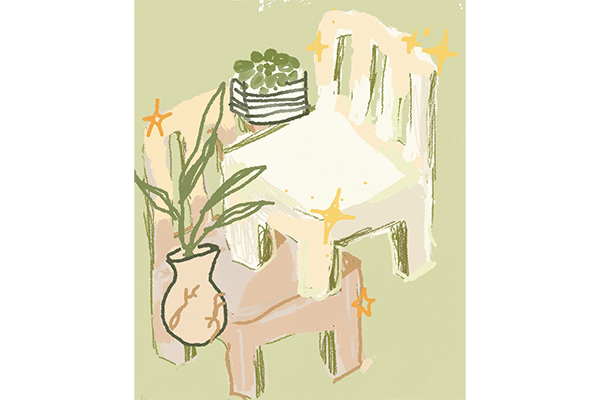Since February, The Harry Ransom Center has been displaying an exhibit on the Arts and Crafts movement in Britain and America titled “The Rise of Everyday Design.” The exhibit tells the story of how 20th-century advertising was fueled by rising socialist views in the mid-19th and 20th centuries, which visitors can learn about before the exhibit leaves July 14.
The Arts and Crafts movement was a period of time between the early 19th and 20th century. British designers and artists began to create anti-industrialization pieces to popularize messages of morality, as many believed the Industrial Age disconnected the lives of citizens from the world.
Ransom Center docent Shannon Hall said this mindset of simplicity and integrity came from designers such as William Morris and John Ruskin, who were upset with the “goop of the Victorian home.”
“These men were socialists and idealists who wanted something beautiful for the masses,” Hall said.
Hall said Morris and Ruskin’s designs went against the realities of the Industrial Age. Elisa Leichty attended the exhibit and said these realities and ideals had the largest impact on her opinion of the movement’s artifacts on display.
“I love the ideals of this movement,” Leichty said. “The social collectivism and trying to unite the workers in a coherent way — there’s some power in that.”
The gallery exhibit includes furniture, pottery and various textiles, all of which tell a story that goes beyond just practicality. A return to simplicity and the handmade aspect of production guided the selection of items.
“Waste not, want not” is a phrase echoed across the movement and serves as a mantra. This quote resides on a plate designed by Augustus Pugin and harkens back to “Victorian morality,” as many of the designers at the time played on a sense of idealistic socialism.
“You can see the contrast to what he thought was ideal,” Hall said. “This period of time, there wasn’t a lot of color. This fellow encouraged artists to use color.”
The socialist views the Arts and Crafts movement was founded on eventually declined due to capitalistic influence. Influenced by the profitability of the Arts and Crafts movement, prominent figures began printing their own magazines, such as The Philistine and author Elbert Hubbard.
Through the decline of the movement, Ransom Center docent Joseph Leahy said it became self-contradictory — it began as a socialist ideal but ended up mass producing products.
One of the last pieces within the Arts and Crafts movement exhibit is a magazine advertisement. While the movement’s start was based on craftsmanship, the popularity of home décor and women’s magazines ultimately led to its downfall, Leahy said. The affordability provided by the mass production of furniture advertised in these magazines pushed handmade furniture out of its scene.
“Domestic life took on a new meaning,” Leahy said. “Things you don’t think are artistic actually are, even something like an iPhone, Art Deco and geometric style.”
Leichty said the Arts and Craft exhibit started with anti-industrial beginnings but ended in mass-produced products that have the facade of being homemade, giving exhibit attendees another look at history.
“Did it all come back down to green and capitalism?” Leitchy said. “It gives you a lot to think about.”















